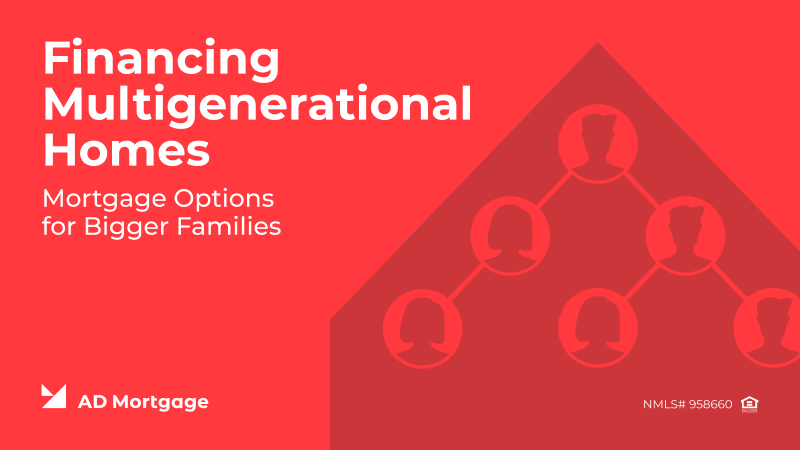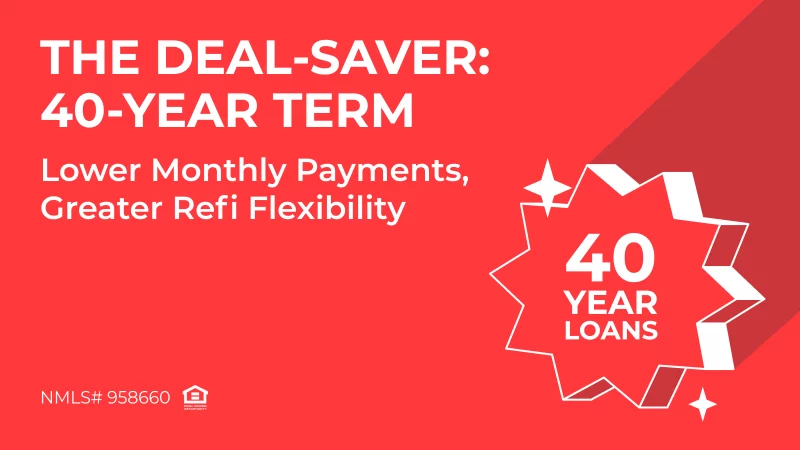The concept of multigenerational living—where multiple generations of a family share a single home—is becoming increasingly popular. Economic challenges, cultural traditions, and the rising cost of caregiving are prompting families to embrace this lifestyle. This trend reflects a need for financial strategies that can accommodate complex living arrangements while addressing individual family dynamics.
For mortgage brokers, understanding the unique needs of multigenerational families is more important than ever. Such households often feature diverse income sources, shared responsibilities, and a mix of short- and long-term goals. Brokers play a critical role in identifying and structuring financial solutions that make these living arrangements feasible.
In this blog, we’ll explore the challenges of financing multigenerational homes, delve into the mortgage options available, and outline strategies brokers can use to structure loans effectively for bigger families.
The Rise of Multigenerational Living
Multigenerational living is more than a trend—it’s a response to shifting societal dynamics. According to recent studies, nearly 20% of Americans live in multigenerational households. Several factors contribute to this growth, highlighting its importance for mortgage brokers and the housing industry.
- Economic Pressures. With rising housing costs and inflation, pooling resources among family members becomes a practical solution. Sharing expenses for mortgage payments, utilities, and property maintenance can ease financial strain on individual members.
- Cultural Norms. In many communities, multigenerational living is deeply rooted in tradition. It fosters familial bonds, provides opportunities for cultural continuity, and strengthens the support system within the household.
- Caregiving Needs. Aging parents and young children often require day-to-day care. Multigenerational households offer a built-in solution, reducing the reliance on external caregiving services and allowing families to provide personalized care.
Additionally, societal shifts like delayed marriages, student loan debt, and job market challenges among younger generations are driving the demand for shared housing arrangements. For older generations, it’s an opportunity to downsize or find a more manageable living arrangement while staying close to family.
This lifestyle, while offering numerous benefits, presents unique challenges—especially when it comes to financing homes that can accommodate larger families or dual living spaces. Addressing these challenges requires innovative mortgage solutions, making it imperative for brokers to understand the specific needs of multigenerational clients and tailor their offerings accordingly.
Challenges of Financing Multigenerational Homes
1. Higher Purchase Prices
Purchasing a larger home to meet multigenerational needs often means higher price tags. For many families, securing adequate financing involves working with brokers who can identify loan products designed for larger amounts, such as jumbo loans or innovative mortgage options. Brokers must also consider cost-saving strategies, like optimizing down payments and leveraging grant programs when available.
2. Complex Borrower Profiles
Multigenerational households frequently include diverse income streams, from salaried employees to self-employed family members or retirees with fixed incomes. This diversity can create complexities in underwriting, as lenders may require additional documentation or impose stricter qualifications. Brokers can streamline the process by proactively gathering and organizing financial details from all contributors.
3. Zoning and Property Restrictions
Adding accessory dwelling units (ADUs) or converting parts of a home to create separate living spaces is a common strategy for multigenerational families. However, navigating zoning laws and local regulations can be a significant hurdle. Brokers should educate families on the importance of working with experienced real estate professionals and contractors who understand these requirements, ensuring that modifications comply with local codes and avoid costly penalties.
Mortgage Options for Multigenerational Families
Traditional Mortgages
For families purchasing larger single-family homes, conventional loans remain a viable option. Traditional mortgages offer predictable terms and competitive interest rates, making them a popular choice. However, brokers need to ensure that the family’s combined income and credit profiles can support a larger loan amount. Assessing debt-to-income ratios and evaluating the long-term financial stability of all contributing members are crucial steps. Additionally, families should explore options for preapproval to streamline the buying process and strengthen their purchasing power in competitive markets.
FHA Loans
The flexibility of FHA loans makes them particularly suited for multigenerational households. FHA loans allow for lower down payment requirements, often as low as 3.5%, making it easier for families to pool resources and afford larger homes. One standout benefit is the ability to include non-occupying co-borrowers, which is invaluable for families where some members contribute financially but may not live on the property. Brokers should emphasize the importance of meeting FHA guidelines, including property standards and mortgage insurance premiums, to ensure a smooth process.
VA Loans
Veterans and active-duty service members can take advantage of VA loans to purchase larger homes with no down payment and competitive interest rates. VA loans are an excellent option for eligible families, particularly those who may have difficulty saving for a substantial down payment. Brokers should educate clients about entitlement amounts and ensure that the property meets VA appraisal standards, which are designed to protect buyers from overpaying or purchasing homes requiring extensive repairs.
Renovation Loans
Renovation loans are an ideal choice for families seeking to modify existing homes to include accessory dwelling units (ADUs), in-law suites, or additional living spaces. These loans cover the cost of home improvements, allowing families to adapt their current property to better suit their needs. Products such as the FHA 203(k) loan or Fannie Mae’s HomeStyle loan provide flexibility for renovations, enabling borrowers to combine purchase and renovation costs into a single mortgage. Brokers should guide families on selecting contractors and understanding the timeline for renovations to avoid delays.
Non-QM Loans
Non-QM loans are a valuable tool for families with non-traditional income sources, such as self-employed individuals, gig workers, or retirees. Unlike conventional loans, Non-QM products offer flexibility in underwriting, enabling lenders to consider alternative forms of income verification, such as bank statements or asset depletion. These loans are especially helpful for multigenerational families with diverse income streams that may not fit traditional qualification criteria. Brokers should discuss the trade-offs, including potentially higher interest rates, while highlighting the opportunity for customization.
By understanding and presenting these mortgage options, brokers can help multigenerational families navigate their unique challenges and secure financing that aligns with their specific needs.
Creative Structuring Tips for Brokers
1. Maximizing Co-Borrower Potential
Including multiple co-borrowers in the mortgage application can significantly increase the borrowing capacity for multigenerational families. Brokers should identify all potential contributors, such as adult children, parents, or other relatives who have stable income streams. It’s crucial to discuss the legal and financial implications of co-borrowing, including shared liability for the mortgage and potential impacts on individual credit scores.
2. Leveraging Home Equity
For families transitioning into multigenerational living, home equity can serve as a powerful tool. Brokers should advise clients on using equity from their current properties to fund the down payment or renovation costs for a new home. Options such as home equity loans, lines of credit, or cash-out refinancing can provide the necessary funds while ensuring manageable repayment terms. Educating families about the long-term financial impacts of tapping into equity is equally important.
3. Exploring Joint Ownership Agreements
Multigenerational families often benefit from clear joint ownership agreements. Brokers should encourage clients to formalize their ownership structure, detailing each family member’s financial contributions and responsibilities. This approach helps avoid potential disputes and ensures transparency. Collaborating with legal professionals to draft these agreements can provide additional peace of mind.
4. Advising on Renovation Loans
For families considering modifications to their existing homes, brokers should highlight renovation loan options. These loans not only cover the cost of adding ADUs or converting unused spaces but also streamline the financing process by bundling renovation and mortgage costs. Brokers should guide clients in selecting reputable contractors, obtaining necessary permits, and planning realistic timelines to avoid unexpected delays or costs.
5. Customizing Loan Solutions
Multigenerational families often have unique financial situations that require creative loan solutions. Brokers should explore customizable options like Non-QM loans, which allow for alternative income documentation and flexible terms. Additionally, discussing hybrid loan options, such as adjustable-rate mortgages (ARMs), may appeal to families seeking lower initial payments as they settle into their new living arrangements.
Advantages for Multigenerational Families
Multigenerational homes offer numerous advantages that go beyond financial savings, creating a lifestyle that supports stronger family connections and improved quality of life. Understanding these benefits can help brokers better communicate the value of shared living arrangements to their clients.
Cost Efficiency
Pooling financial resources allows multigenerational families to share the burden of housing costs, including mortgage payments, property taxes, and utilities. This arrangement often results in significant savings for all members, enabling families to allocate funds toward other goals, such as education, retirement, or healthcare. Moreover, shared living reduces the need for duplicate expenses, like separate internet or streaming services, further enhancing cost efficiency.
Caregiving Benefits
For families with aging parents or young children, multigenerational living provides built-in caregiving support. Grandparents can help with childcare, reducing the reliance on expensive daycare services, while adult children can assist with the care of their parents. This arrangement fosters an environment of mutual support, ensuring that caregiving responsibilities are shared rather than falling on one individual.
Enhanced Bonding
Living under one roof strengthens familial bonds by encouraging daily interactions and fostering a sense of unity. Multigenerational homes often become the hub for cultural traditions, family celebrations, and shared experiences that might otherwise be lost in separate households. This lifestyle is particularly valuable for families who prioritize strong relationships and cultural continuity.
Improved Accessibility
Multigenerational homes can be customized to accommodate the unique needs of different family members. For example, modifications like ramps, wider doorways, or separate living quarters ensure that aging parents or individuals with disabilities can live comfortably and safely. Such adaptations make the home more inclusive for all generations.
Emotional and Social Support
The emotional benefits of multigenerational living cannot be overstated. Having loved ones close by provides a strong support system during challenging times, reducing feelings of isolation and improving overall well-being. Children benefit from the wisdom and presence of grandparents, while older family members feel valued and included in daily life.
By embracing the advantages of multigenerational homes, families can create an enriching and supportive environment that benefits all members. Brokers who highlight these benefits can effectively guide clients in choosing housing solutions that align with their long-term goals and values.
Practical Advice for Brokers
Helping multigenerational families navigate the complexities of home financing requires a combination of expertise, empathy, and proactive problem-solving. Brokers who can provide personalized advice and tailored solutions will stand out as trusted advisors. Here are some practical tips for brokers working with multigenerational families.
1. Understand the Family’s Unique Goals
Every multigenerational family has different priorities, whether it’s accommodating aging parents, creating separate spaces for adult children, or pooling resources to reduce financial strain. Take the time to understand their goals and motivations. Conduct detailed consultations to identify their immediate needs and long-term objectives. This clarity will allow you to recommend the most suitable mortgage products and financial strategies.
2. Simplify the Application Process
Multigenerational families often have complex financial profiles, with multiple income sources and credit histories to consider. Streamline the application process by clearly outlining the required documentation, such as proof of income, tax returns, and credit reports for all contributing members. Use technology, such as digital portals, to make document collection and communication more efficient.
3. Highlight Flexible Loan Products
Introduce families to financing options that suit their unique circumstances. For example, FHA loans can accommodate non-occupying co-borrowers, while renovation loans can help families adapt existing homes. Be prepared to explain the benefits and trade-offs of each option, such as the cost of mortgage insurance for FHA loans or higher interest rates for Non-QM loans.
4. Address Potential Challenges
Proactively discuss common challenges multigenerational families may face, such as zoning restrictions for home modifications or legal considerations in co-borrowing agreements. Collaborate with real estate agents, attorneys, and financial planners to provide comprehensive support and mitigate risks.
5. Focus on Education and Transparency
Empower families by educating them about the mortgage process, from preapproval to closing. Break down complex terms into easy-to-understand language and be transparent about costs, timelines, and potential hurdles. Providing clear and honest guidance builds trust and ensures clients feel confident in their decisions.
6. Stay Accessible and Responsive
Multigenerational families often involve multiple decision-makers, which can lead to questions and concerns from various stakeholders. Maintain open lines of communication and be responsive to their needs. Regular updates and check-ins can help you address issues promptly and keep the process on track.
Conclusion
Multigenerational living is more than just a practical housing solution. It is a lifestyle that fosters strong familial bonds, shared responsibilities, and financial advantages. For mortgage brokers, the growing demand for multigenerational homes presents an opportunity to provide value-driven guidance and establish lasting client relationships. AD Mortgage has a range of programs to assist in meeting the needs of these families.
In the end, the success of a multigenerational living arrangement hinges on collaboration and open communication. Brokers who prioritize education, responsiveness, and personalized strategies will not only meet their clients’ expectations but exceed them, creating a foundation for long-term success in their careers. Contact your AD Mortgage account executive to see explore your options.
As multigenerational living continues to grow in popularity, seize the opportunity to adapt and innovate your approach. By offering creative and thoughtful solutions, you can empower families to embrace this rewarding lifestyle and thrive in their shared homes.




